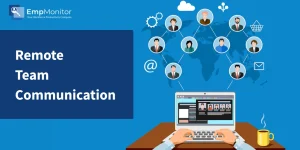Accounting Software

Accounting Software is the most vital tool that transforms financial operations of enterprises to be efficient, accurate, compliant and gives insights for strategic decision making.
Manage Your Account Receivables, Invoices and Payment Reminders is a program that will help in managing your accounts receivables, invoicing, and reminders payment management expense reports for mileage tracking, inventory tracking, etc.
Double entry books double-entry books
Double-entry accounting makes use of debits and credits to register every transaction. Each row increments or deducts an account; if the debits equal all the credits, the book balances – a financial record with fewer errors!
Double-entry accounting also gives you access to a comprehensive view of your business’s finances, and provides the building blocks for trusting both investors and creditors, while eliminating the possibility of mistakes and fraud. But double-entry accounting can be a useful tool for any organization, but it is often so complicated that some people would be hesitant to embrace it.
Xero is one of the most popular double-entry accounting software and it comes with features like unlimited invoices and bills. Available in three packages (Lite, Growing and Established) with Hubdoc bill and receipt capture solution for each package included in the subscription or perpetual license license packages depending on the scale and complexity of your business.
Add-ons: Integrations.
Integrated accounting software combines several systems on one dashboard, automatically populating the relevant information into your company’s financial system. Such could be payment processors, expense apps or payroll systems, trading partner sites, ERP systems or CRM tools – the list goes on and on!
Centralized data makes decision making across your whole organization simpler. It automates repetitive activities such as login for multiple apps, transferring data between applications, and storing passwords, reducing redundant or duplicate information that can take up space or lead to erroneous choices.
Even compliance requirements can be met by accounting software, such as calculating taxes correctly or storing electronic invoices. Software associated with accounting systems will also alert you of potential mistakes and recommend adjustments or reminders; saving you both time and money as it decreases the need for staff to manage accounting.
Reporting features are available as well.
Reporting is an important function in accounting software as it helps companies track their business’ financial condition, prevent accounting mistakes and shorten invoicing cycles, and keep up with changing taxation and regulatory regulations. Software manages assets, liabilities, revenue, automatically processes journal entries and subledgers, which makes real-time data available to CFOs, treasurers and controllers — not to mention avoiding the redundancy of records and ensuring better budgeting/forecasting/expense control.
There are companies with their own in-house reports, and others that utilize accounting software tools that automate this process. These programs are applicable in every business from field service to the grocery store. Financial statements and reports – Managers and owners can personalize the financial statements and reports to measure performance and productivity, and to set metrics and objectives to reward employees.
Price!
Accounting software helps businesses keep track of money more effectively and precisely as well as meeting statutory reporting requirements – less time is spent filling out accounting returns with the Registrar of Companies and Stock Exchanges – easier to budget and make projections.
Depending on the size and sophistication of an enterprise, the initial cost of accounting software usually comes in the form of license costs. Customization costs, data migration cost, which is mostly based on data volumes (a lot), these add to the price significantly.
While most accounting systems have various functions, you must choose one that suits your business needs. When you look at base pricing plans, you want to exclude payroll, taxes and payments support fees so you know exactly how much it costs. Be aware as well of retailers who add-on charges without making it clear what it is.







